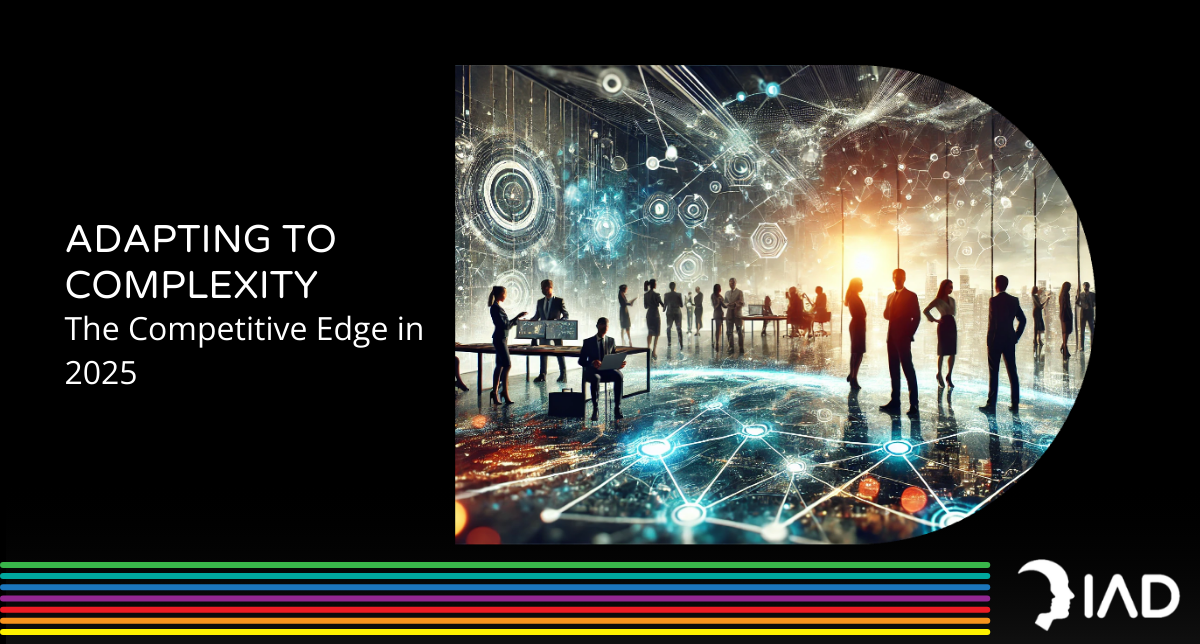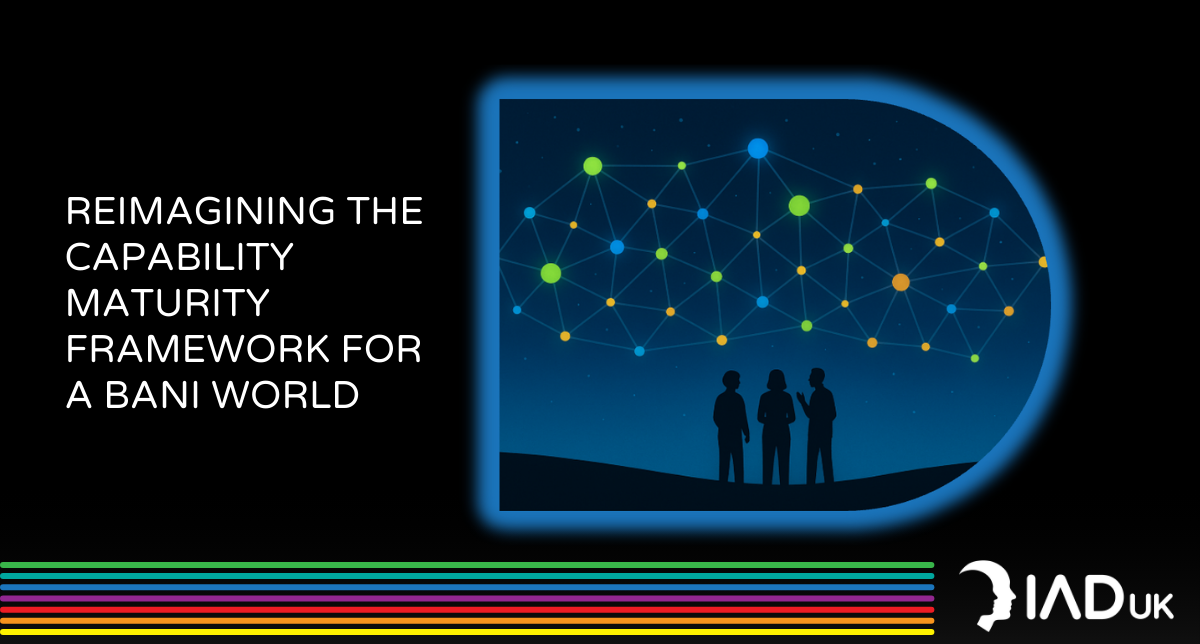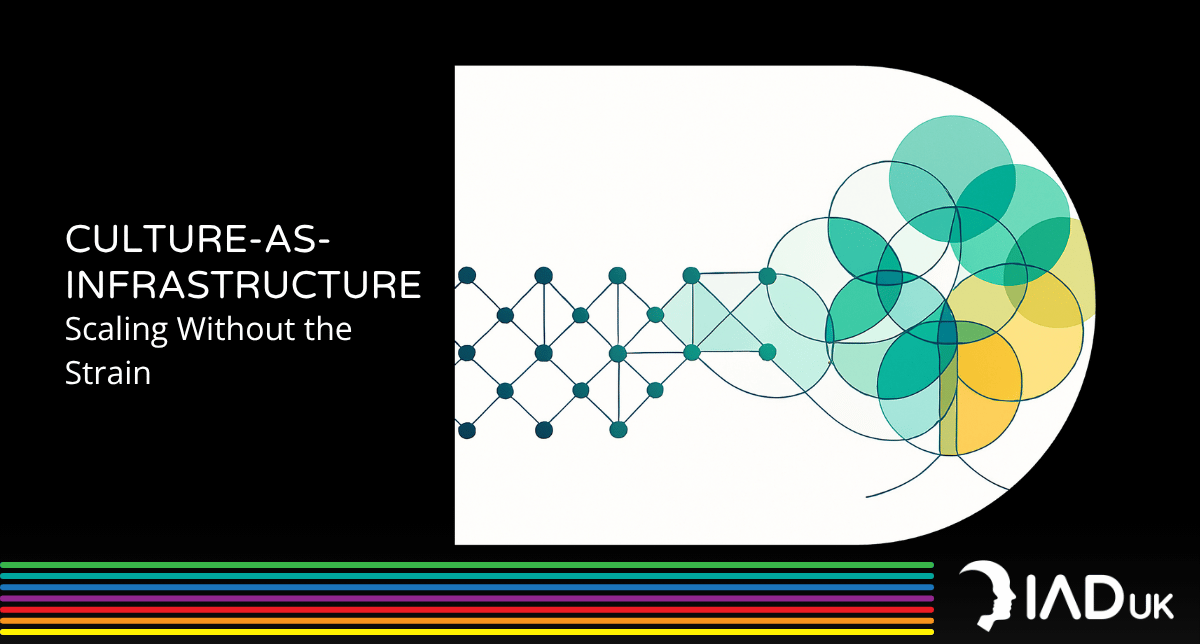Adapting to Complexity
How Dynamic Intelligence Empowers Organisations to Thrive in an Unpredictable World

By mid-February, businesses are already taking stock of Q1. Strategic plans are tested against reality, unexpected challenges emerge, and market shifts demand rapid adjustments. Yet, for many organisations, the biggest challenge isn’t external change—it’s how leaders respond to it.
Traditional leadership models rely on linear thinking, where strategy follows predictable patterns. But in 2025, business environments are anything but predictable. Industries are being reshaped by AI, global disruptions, and shifting workforce expectations. The competitive advantage now belongs to leaders who can navigate complexity, not resist it.
Yet many leadership development programs still focus on knowledge acquisition rather than thinking agility. This gap is where organisations fall behind—not because they lack expertise, but because they lack leaders who can think in complex, adaptive ways.
This is why Dynamic Intelligence (DI) is no longer optional. The ability to shift perspectives, integrate new information, and make nonlinear decisions is what will separate stagnant organisations from those that thrive.
The question is no longer how much do leaders know? but rather, how well can they think in complexity?
Because as uncertainty grows, the real risk isn’t the unknown—it’s leadership thinking that remains static while the world moves forward.
Leading with Thinking Agility
Complexity isn’t a problem to solve—it’s a reality to engage with. Yet many organisations treat it as an obstacle, trying to simplify, control, or avoid it. The leaders who thrive in 2025 will be those who think with agility, adapting in real time rather than relying on rigid strategies.
This is where Dynamic Intelligence (DI) changes the game. DI isn’t about knowing more—it’s about expanding thinking capacity to manage competing priorities, navigate ambiguity, and recognise patterns within complexity.
Leaders with high DI can:
- Identify signals within the noise. They recognise subtle shifts in their environment before they become crises.
- Adjust strategies dynamically. Rather than committing to a fixed plan, they refine their approach based on real-time learning.
- Make decisions with greater awareness. They are less prone to cognitive rigidity, ensuring they consider multiple perspectives before acting.
The Dynamic Intelligence Development System™ (DIDS™) helps leaders strengthen these capabilities by:
- Developing cognitive flexibility, allowing them to switch between different ways of thinking.
- Expanding Awareness, so they can anticipate change rather than react to it.
- Challenging habitual decision-making, ensuring choices are made with clarity rather than unconscious bias.
In an unpredictable world, leadership agility isn’t a nice-to-have—it’s the competitive edge. But what happens when organisations fail to develop it? The costs of complexity blindness are higher than most leaders realise.
The Hidden Cost of Complexity Blindness
The greatest risk organisations face isn’t disruption itself—it’s failing to recognise disruption until it’s too late. Leaders who rely on habitual thinking patterns often miss the weak signals of change, making strategic moves only after competitors have already adapted.
When leaders lack Dynamic Intelligence, organisations become:
- Slow to respond. Opportunities are missed because decision-making relies on outdated mental models.
- Trapped in rigid strategies. Instead of adjusting to emerging realities, teams double down on plans that no longer fit.
- Vulnerable to sudden shifts. Without the ability to think in complexity, crises feel like surprises rather than predictable challenges.
Imagine two companies facing the rapid rise of AI-driven automation.
- Company A relies on traditional strategic planning, assuming gradual adoption and maintaining business as usual. Leadership dismisses early warnings, convinced their existing model is strong enough to withstand change. By the time they react, competitors have integrated AI solutions, and Company A is struggling to catch up.
- Company B operates with Dynamic Intelligence. Instead of resisting uncertainty, leadership remains open to multiple scenarios, running cognitive challenge sessions to explore possible futures. They pivot early, embedding AI capabilities before competitors. Rather than reacting to change, they turn it into an advantage.
Real-world cases—like Blockbuster’s failure to adapt to streaming and Coca-Cola’s successful use of AI-powered marketing—demonstrate this principle in action. The lesson? Complexity isn’t the enemy—rigid thinking is.
So how can organisations actively develop leaders who thrive in uncertainty? It starts with three strategic shifts.
How to Build Dynamic Intelligence
1. Rewire Decision-Making for Cognitive Agility
Traditional decision-making assumes stability—leaders gather data, weigh options, and choose the best course. But in complex environments, conditions shift faster than strategies can be executed. Leaders must develop cognitive agility, the ability to reassess and adjust thinking in real time.
- Use the DIDS™ cognitive profiling tool to uncover thinking biases that limit adaptability.
- Implement cognitive challenge sessions, where teams stress-test key decisions by exploring alternative perspectives.
- Train leaders to intentionally shift cognitive frames, moving between broad strategic thinking and focused tactical execution.
The outcome? Decisions become dynamic, evolving as new information emerges, reducing the risk of rigidity in volatile condition
2. Embed Dynamic Leadership Development
Most leadership programs focus on what to do rather than how to think. But static leadership development produces static leaders—those who rely on past success rather than adapting to new realities.
- Replace knowledge-based training with real-time scenario coaching using DIDS™ principles.
- Develop identity-flexible leaders, who can shift leadership styles depending on the situation rather than defaulting to habitual approaches.
- Encourage leaders to reflect on how their Cognitive Intentions shape decision-making and adjust them when needed.
The result? Leaders become adaptive thinkers, capable of aligning strategy with an evolving landscape rather than following a rigid playbook.
3. Foster a Culture of Adaptive Thinking
Agility isn’t just a leadership skill—it must be embedded in the organisation’s culture. Teams that fear failure or prioritise efficiency over learning become risk-averse, making innovation nearly impossible.
- Reward employees for challenging assumptions and questioning dominant narratives.
- Use DIDS™ team coaching to integrate cognitive diversity into problem-solving.
- Shift from an efficiency-focused culture to an experiment-driven culture, where learning from failure is valued.
Consequently, the organisation evolves continuously, rather than reacting to change after it happens.
Dynamic Intelligence isn’t a leadership trend—it’s the foundation of future-proof organisations. The real question is: how will your organisation develop it?
Future-Proof Your Leadership with DIDS™
The difference between stagnation and success in 2025 won’t be who has the best strategy—it will be who has the leaders capable of thinking beyond complexity.
Dynamic Intelligence isn’t about reacting faster. It’s about thinking differently—recognising patterns in uncertainty, adapting in real time, and making decisions with greater Awareness and flexibility. Organisations that embed DIDS™ into leadership development will:
✔ Reduce decision-making rigidity by developing cognitive agility.
✔ Create leaders who pivot with confidence, instead of resisting change.
✔ Build cultures that embrace complexity, turning uncertainty into opportunity.
This isn’t just about surviving disruption—it’s about leading it.
If your organisation is ready to develop the thinking capabilities that drive real competitive advantage, now is the time to act.
Schedule a consultation to future-proof your organisation.
Alternatively, why not download our comprehensive brochure




